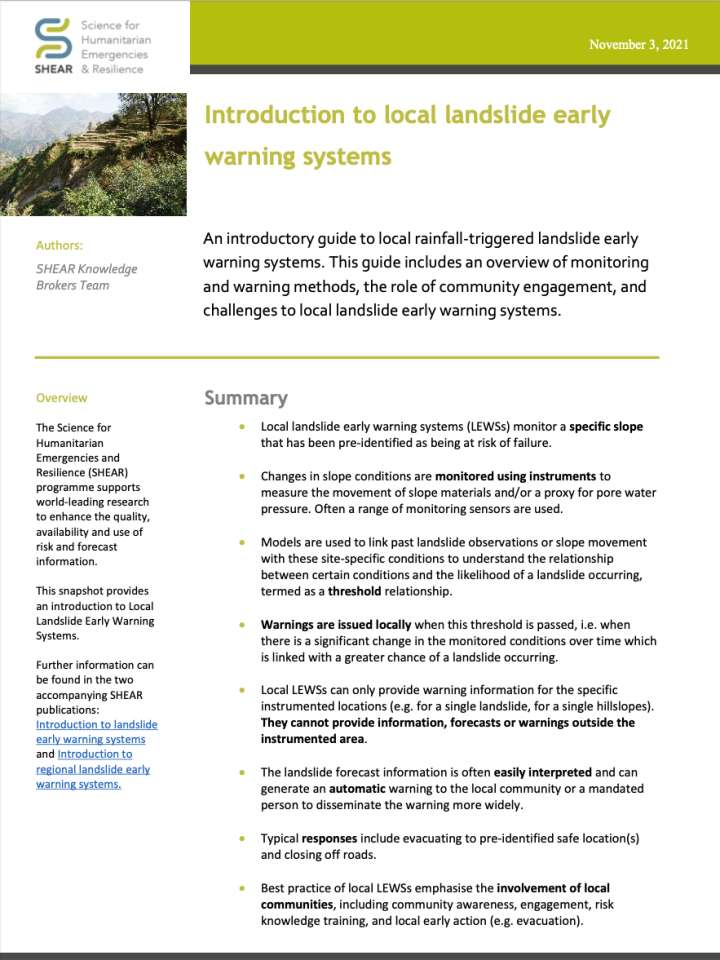Introduction to local landslide early warning systems
This is an introductory guide to local rainfall-triggered landslide early warning systems. This guide includes an overview of monitoring and warning methods, the role of community engagement, and challenges to local landslide early warning systems. The Science for Humanitarian Emergencies and Resilience (SHEAR) programme supports world-leading research to enhance the quality, availability and use of risk and forecast information. This introductory guide to local rainfall-triggered landslide early warning systems includes an overview of monitoring and warning methods, the role of community engagement, and challenges to local landslide early warning systems.
Some of the topics this guide assesses include:
- Local landslide early warning systems (LEWSs) monitor a specific slope that has been pre-identified as being at risk of failure.
- Changes in slope conditions are monitored using instruments to measure the movement of slope materials and/or a proxy for pore water pressure. Often a range of monitoring sensors are used.
- Models are used to link past landslide observations or slope movement with these site-specific conditions to understand the relationship between certain conditions and the likelihood of a landslide occurring, termed as a threshold relationship.
Explore further
